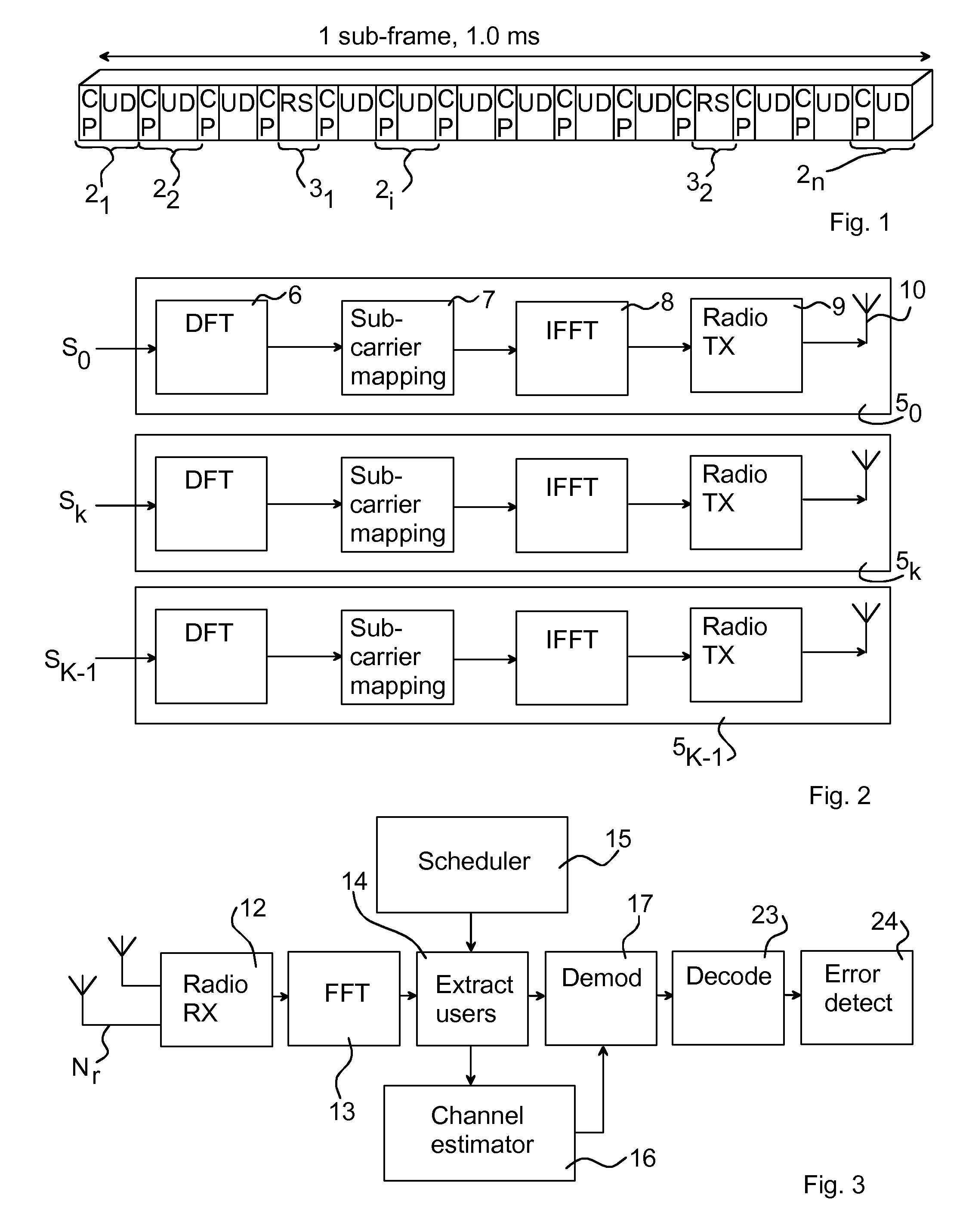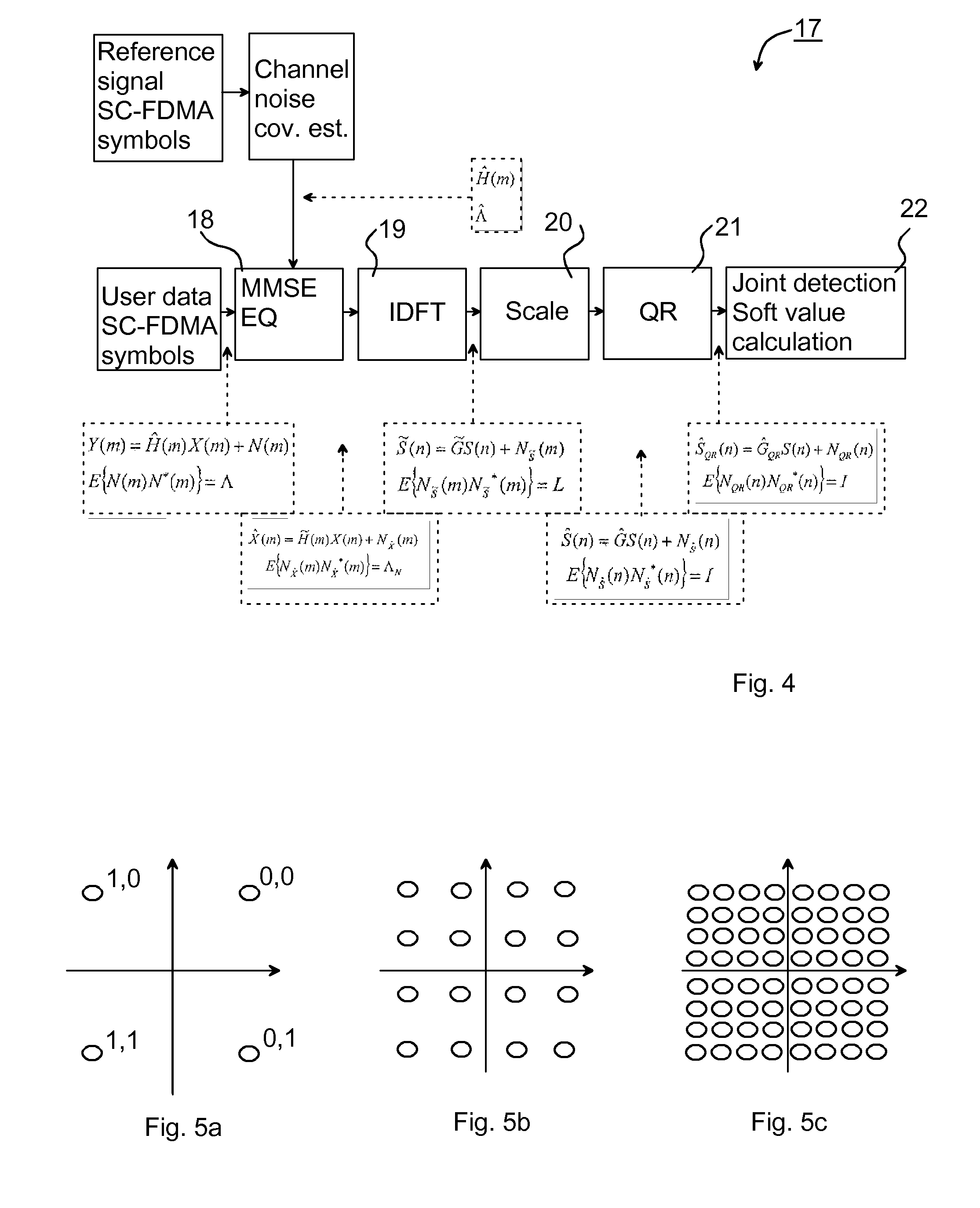Method and Receiver For Jointly Decoding Received Communication Signals Using Maximum Likelihood Detection
a communication signal and maximum likelihood detection technology, applied in the field of receivers and methods for jointly decoding received communication signals, can solve the problems of complex methods used for combating interference, limiting performance, and reducing the efficiency of the receiver, so as to achieve the effect of designing a rather complex and consequently expensive receiver
- Summary
- Abstract
- Description
- Claims
- Application Information
AI Technical Summary
Benefits of technology
Problems solved by technology
Method used
Image
Examples
Embodiment Construction
[0036]Only parts of a telecommunication system necessary for the understanding of the present invention are described. For clarity, descriptions of well-known devices are thus omitted.
[0037]As mentioned in the introductory part, the uplink for LTE is based on SC-FDMA, sometimes also denoted DFTS-OFDM (Discrete Fourier Transform Spread-OFDM) since SC-FDMA can be regarded as a DFT spread OFDM. FIG. 1 illustrates one sub-frame 1 for uplink LTE. In the LTE uplink, several SC-FDMA symbols 21, . . . , 2i, . . . , 2n form the sub-frame 1. In particular, the sub-frame comprises 12 SC-FDMA symbols 21, . . . , 2i, . . . , 2n with user data (UD) and a respective cyclic prefix (CP), n in the illustrated case being equal to 12. The sub-frame 1 further comprises two symbols 31, 32 with reference signals (RS), for enabling the establishment of channel parameters, the reference signals sometimes also denoted pilot signals or training signals. The present invention is mainly concerned with such SC-F...
PUM
 Login to View More
Login to View More Abstract
Description
Claims
Application Information
 Login to View More
Login to View More - R&D
- Intellectual Property
- Life Sciences
- Materials
- Tech Scout
- Unparalleled Data Quality
- Higher Quality Content
- 60% Fewer Hallucinations
Browse by: Latest US Patents, China's latest patents, Technical Efficacy Thesaurus, Application Domain, Technology Topic, Popular Technical Reports.
© 2025 PatSnap. All rights reserved.Legal|Privacy policy|Modern Slavery Act Transparency Statement|Sitemap|About US| Contact US: help@patsnap.com



